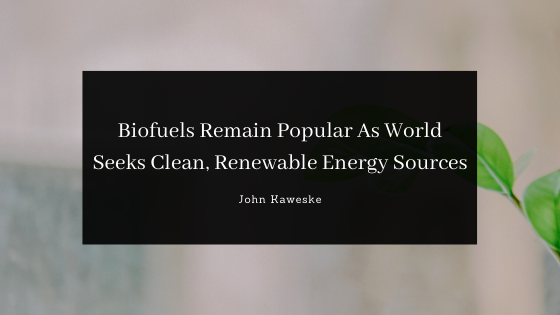Check out the video version of John Kaweske’s blog post!
Biofuels today represent a significant portion of the world’s energy infrastructure. Interest in the developments of such products as ethanol and biodiesel blossomed after the oil crisis of the 1970s. During the tenure of President Jimmy Carter, the United States began to feel vulnerable to the whims of OPEC and other major fossil fuel producers.
The attraction of biofuels is that it could enable America to become energy independent and not subject to the whims of often hostile foreign powers.
But the concept of biofuels also became popular for other reasons. Environmentalists embraced biofuel to move away from heavy-polluting fossil fuels, such as coal and crude oil. Biofuels were also renewable and sustainable. For example, they held the potential to eliminate the environmentally destructive need to strip-mine for coal. They might also reduce the incidence of massive oil spills in the oceans.
Biofuels are also popular with farmers. That’s because ethanol and biodiesel are made from grain crops. Back in the 1970s, the idea was floated that ramping up biofuel technology would create energy independence while also solving the many “farm crisis” periods suffered by farmers due to low commodity prices.
Of course, the history of the U.S. experience with biofuels is one of considerable controversy. For example, many environmentalists soured on the idea when they began to consider how much pressure growing more crops put on soil, land, and water, including cutting down trees to make way for corn and soybeans.
Biofuels are not a free ride. That’s because manufacturing them requires using coal, natural gas, or fossil fuel oil to drive the process. Numerous other complications have arisen as well, but that goes beyond the scope of what we’re discussing here.
Today, the search for all-new biofuels products remains a popular pursuit by the energy industry. For example, there is an intense interest in using aquatic plants, mainly algae, as the main ingredient for a clean-burning biofuel. Algae biofuel is being touted as highly affordable, sustainable, and scalable.
Using algae and seaweed also may mitigate the problem of aquatic plant blooms driven by rising ocean temperatures due to climate change. Scouring shorelines of algae and seaweed clean the water while also providing a viable energy source.
John Kaweske of Colorado Springs is a biodiesel fuel and technology expert. As President of Bio Clean Energy, S.A., he draws from 20 years of professional experience to offer valuable insight into the industry. When he isn’t working on clean energy efforts, he’s spending time with his family and practicing daily meditation.

